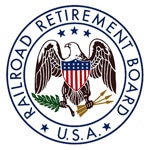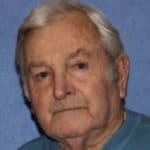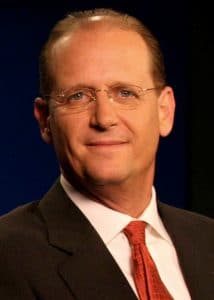Retired General Chairperson Carlton Leon Graves, 87, died Tuesday, June 27 at the Franklin County Rehab Center in St. Albans, Vt.
Before hiring out on the railroad, Graves served in the Vermont National Guard. He also owned and operated his own dairy farm while employed by the Central Vermont Railway. He hired out in 1952 as a fireman on steam engines and retired as an engineer on Amtrak. Graves was a 50-year member of Local 256 of the former United Transportation Union (now SMART Transportation Division). He held office as general chairperson for many years.
Graves was a member of the First Baptist Church of St. Albans, where he served on the Board of Deacons and as Chairman of the Board of Trustees. He was also a member of the Fairfield Historical Society and served as a Lister and tax collector for the town of Fairfield, Vt. He was also know for his collection of antique tractors.
Graves is survived by his wife, Joyce; children, Leon (Amy) Graves, Lisa (Kerry) Griswold, Reverend Larry (Kathy) Graves, and Jeffrey (Carla) Graves; as well as 10 grandchildren and 13 great-grandchildren; brother, Alvin Graves and many nieces and nephews.
Graves was preceded in death by his parents Guy and Louise (Gould) Graves; sons, Stephen and David; one brother and three sisters.
Family and friends will be received by the family Friday, June 30 from 4 p.m. to 7 p.m. at the Heald Funeral Home, 87 South Main St., St. Albans, VT 05478. A funeral service will be held Saturday, July 1 at 1 p.m. at the First Baptist Church of St. Albans, 29 Congress St., St. Albans, VT 05478. Interment will follow at the St. Albans Bay Cemetery.
The family requests that donations be made in Graves’ memory to the Franklin County Home Health Agency, 3 Home Health Circle, St. Albans, VT 05478 or to the First Baptist Church of St. Albans, 29 Congress St., St. Albans, VT 05478, in lieu of flowers.
Click here to leave condolences for the family.
 Each year, the U.S. Railroad Retirement Board (RRB) prepares a Certificate of Service Months and Compensation (Form BA-6) for every railroad employee who had creditable railroad compensation in the previous calendar year. The RRB will mail the forms to employees during the first half of June. While every effort has been made to maintain current addresses for all active railroad employees, anyone with compensation reported in 2016 who has not received Form BA-6 by July 1, or needs a replacement, should contact the nearest RRB field office by calling the agency’s toll-free number, 1-877-772-5772.
Each year, the U.S. Railroad Retirement Board (RRB) prepares a Certificate of Service Months and Compensation (Form BA-6) for every railroad employee who had creditable railroad compensation in the previous calendar year. The RRB will mail the forms to employees during the first half of June. While every effort has been made to maintain current addresses for all active railroad employees, anyone with compensation reported in 2016 who has not received Form BA-6 by July 1, or needs a replacement, should contact the nearest RRB field office by calling the agency’s toll-free number, 1-877-772-5772.In checking the 2016 compensation total, employees should be aware that only annual earnings up to $118,500 were creditable for railroad retirement purposes in that year, and that $118,500 is the maximum amount shown on the form. To assist employees in reviewing their service credits, the form also shows service credited on a month-by-month basis for 2015, 2014, and 2013, when the creditable compensation maximum was $118,000 for 2015, $117,000 for 2014, and $113,700 for 2013. The form also identifies the employer(s) reporting the employee’s 2016 service and compensation.
Besides the months of service reported by employers, Form BA-6 shows the number of any additional service months deemed by the RRB. Deemed service months may be credited under certain conditions for an employee who did not work in all 12 months of the year, but had creditable tier II earnings exceeding monthly prorations of the creditable tier II earnings maximum for the year. However, the total of reported and deemed service months may never exceed 12 in a calendar year, and no service months, reported or deemed, can be credited after retirement, severance, resignation, discharge, or death.
The form also indicates the number of months of verified military service creditable as service under the Railroad Retirement Act, if the service was previously reported to the RRB. Employees are encouraged to submit proofs of age and/or military service in advance of their actual retirement. Filing these proofs with the RRB in advance will streamline the benefit application process and prevent payment delays.
For employees who received separation or severance payments, the section of the form designated Taxable Amount shows the amounts reported by employers of any separation allowance or severance payments that were subject to railroad retirement tier II taxes. This information is shown on the form because a lump sum, approximating part or all of the tier II taxes deducted from such payments made after 1984 which did not provide additional tier II credits, may be payable by the RRB upon retirement to qualified employees or to survivors if the employee dies before retirement. The amount of an allowance included in an employee’s regular compensation is shown under Compensation Amount.
Form BA-6 also shows, in the section designated Employee Contributions, the cumulative amount of tier II railroad retirement payroll taxes paid by the employee over and above tier I social security equivalent payroll taxes. While the RRB does not collect or maintain payroll tax information, the agency computes this amount from its compensation records in order to advise retired employees of their payroll tax contributions for Federal income tax purposes.
Employees should check their name, address, birth date, and sex shown at the top of the form. If the form shows the birth date as 99-9999 and the gender code is U (for unknown), it means the RRB is verifying his or her social security number with the Social Security Administration. Otherwise, if the personal identifying information is incorrect or incomplete (generally a case where the employee’s surname has more than 10 letters and the form shows only the first 10 letters) or the address is not correct, the employee should contact an RRB field office. The field office can then correct the RRB’s records. This is important in order to prevent identity or security-related problems that could arise if the employee wants to use certain Internet services available on the RRB’s website.
Employees may view their railroad retirement service and compensation records; get annuity estimates; apply for or claim railroad unemployment benefits; claim sickness benefits; and access their railroad unemployment insurance account statements through Benefit Online Services. An employee must set up an account to use these services and can find instructions for establishing an online account in that same section. For security purposes, first-time users must enter a Password Request Code (PRC). The agency mails a PRC to any employee who files a paper application for unemployment or sickness benefits. If an individual has not received a PRC, they can submit a request for one on the Benefit Online Services web page. They will then receive the PRC by mail at their home address in about 10 days. Additional information about PRC and PIN/Password is available under PIN Password (PPW) FAQ.
Employees can also request that printouts of their individual railroad retirement records of service months and compensation be mailed to them. A PIN/Password is not required to use this service, which can accessed through the no login required service menu of Benefit Online Services.
If the employee’s name was incomplete on Form BA-6, and he or she has not yet contacted an RRB field office to correct it, the employee should enter his or her first and middle initials and his or her surname just as it appears on the Form BA-6 or a previously furnished printout of service and compensation, along with the other requested information, in order to submit an online request.
Any other discrepancies in Form BA-6 should be reported promptly in writing to:
Protest Unit – CESC
Railroad Retirement Board
844 North Rush Street
Chicago, Illinois 60611-1275
The employee must include his or her social security number in the letter. Form BA-6 also explains what other documentation and information should be provided. The law limits to four years the period during which corrections to service and compensation amounts can be made.
For most employees, the address of the RRB office serving their area is provided on the form along with the RRB’s nationwide toll-free number (1-877-772-5772). RRB field offices are open to the public from 9:00 a.m. to 3:30 p.m. on Monday, Tuesday, Thursday, and Friday, and from 9:00 a.m. to noon on Wednesday, except on Federal holidays.



 OSHA’s Heat Illness Prevention campaign, launched in 2011, educates employers and workers on the dangers of working in the heat. Through training sessions, outreach events, informational sessions, publications, social media messaging and media appearances, millions of workers and employers have learned how to protect workers from heat. OSHA’s safety message comes down to three key words: Water. Rest. Shade.
OSHA’s Heat Illness Prevention campaign, launched in 2011, educates employers and workers on the dangers of working in the heat. Through training sessions, outreach events, informational sessions, publications, social media messaging and media appearances, millions of workers and employers have learned how to protect workers from heat. OSHA’s safety message comes down to three key words: Water. Rest. Shade.